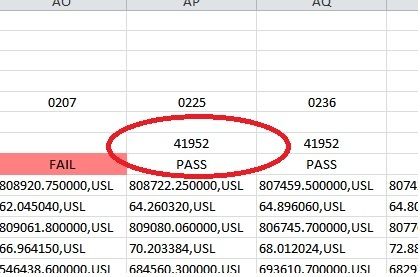Demo 2a is good enough.
It only took me less than a min to import 600 data.
yes, I have re-start my computer, re-Open workbook and paste code to worksheet module. same results.
With Demo 2a code, I just need to import the data from 5 different testers (from different locations) and combine them into one spreadsheet to plot the CP/CPK, Distribution chart etc and more.
I can bare with it to manual insert a column after "A" if I need to add-in more info or remarks and manual replace the row 7 to date format. not a big concerns.
Thanks a million.
It only took me less than a min to import 600 data.
yes, I have re-start my computer, re-Open workbook and paste code to worksheet module. same results.
With Demo 2a code, I just need to import the data from 5 different testers (from different locations) and combine them into one spreadsheet to plot the CP/CPK, Distribution chart etc and more.
I can bare with it to manual insert a column after "A" if I need to add-in more info or remarks and manual replace the row 7 to date format. not a big concerns.
Thanks a million.

